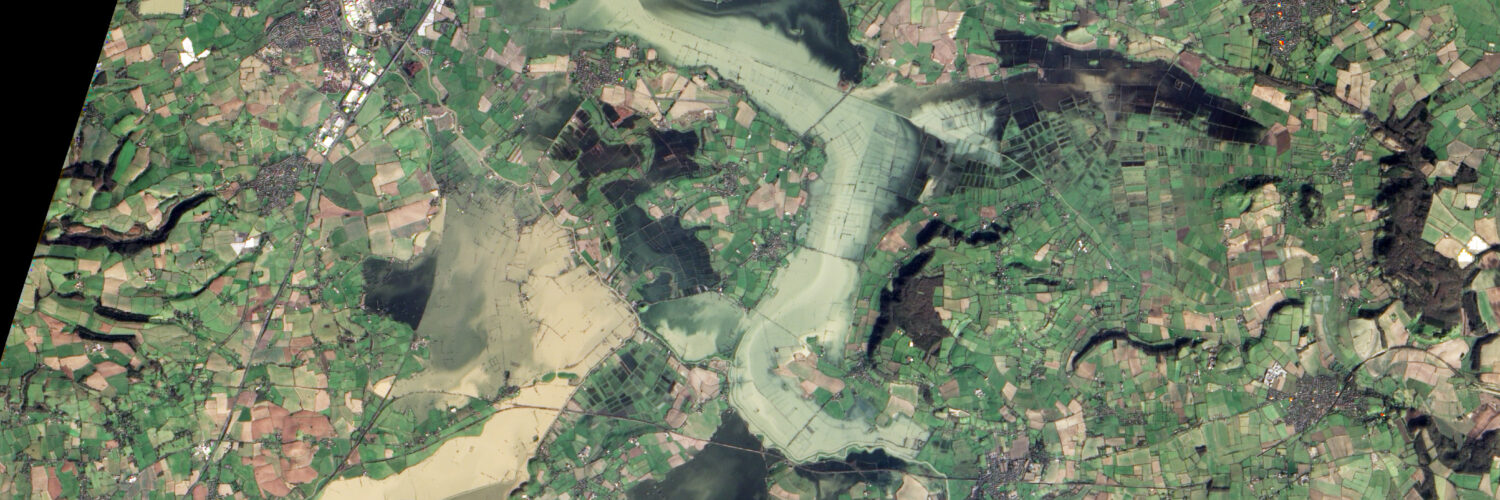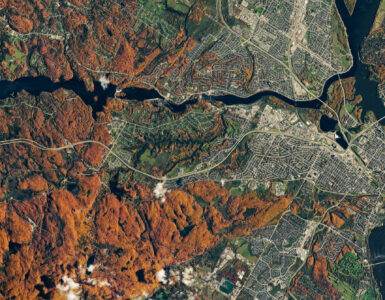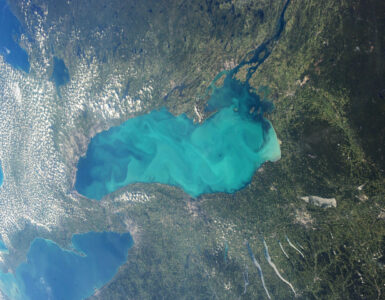In February and March of this year, the UK Space Agency hosted the first-ever international CEOS student webinars—an exciting milestone that brought together students from around the world to explore the fascinating world of Earth observation satellites.
These interactive workshops are part of the UK Space Agency’s broader ambition to pilot a youth-focused programme that not only inspires the next generation of scientists and engineers but also amplifies the youth voice within CEOS.
 Beth Greenaway of the UK Space Agency visiting one of the participating UK schools ahead of the webinars.
Beth Greenaway of the UK Space Agency visiting one of the participating UK schools ahead of the webinars.
Aimed at students aged 14–16, this year-long ‘CEOS in Schools’ initiative showcases how satellite-based Earth observation is used to tackle some of the world’s most pressing challenges—from climate change and environmental protection to disaster response and sustainable development. Beyond the science, the programme also offers students a unique opportunity to experience the power of international collaboration.
 Dan Matsapola of WGCapD Chair/SANSA, visiting one of the participating schools from South Africa, ahead of the webinars
Dan Matsapola of WGCapD Chair/SANSA, visiting one of the participating schools from South Africa, ahead of the webinars
CEOS International student webinars
In February and March, over 125 students from six CEOS member countries came together for a series of engaging workshops focused on two key themes: “How Earth Observation (EO) Satellites Are Used in Response to Natural Disasters” and “EO for Biodiversity.”
Key Highlights:
- Over 125 students across 6 CEOS countries involved in 2025 alone.
- Focus on International collaboration, the role of EO satellites and Biodiversity from Space
- Special emphasis on encouraging a two-way conversation between students and CEOS experts.
During the first workshop, students collaborated in small groups to share how EO satellites are used in their own countries to respond to natural disasters. Building on these discussions, they explored real-world case studies—from wildfires and floods to volcanic eruptions—and worked together to evaluate how satellite data could be applied in each scenario. These hands-on activities encouraged critical thinking, teamwork, and a deeper understanding of the role EO plays in disaster management.
The second workshop focused on the vital role satellites play in monitoring biodiversity from space, with a spotlight on the recently launched ESA Biomass mission. This mission is designed to measure the amount of carbon stored in the world’s forests—particularly rainforests—offering critical insights into global carbon cycles and climate change.
World-leading Earth observation scientists, Professor Mat Disney and Dr. Luke Smallman, opened the session by explaining how the Biomass mission will revolutionize the way we monitor rainforests and how its data will be used to inform environmental policy and conservation efforts.
 ESA’s BIOMASS Earth Explorer Mission – that will measure the mass of the worlds forests.
ESA’s BIOMASS Earth Explorer Mission – that will measure the mass of the worlds forests.
Credit: European Space Agency.
Following the presentations, students broke into smaller groups to explore other ways EO satellites can be used to monitor biodiversity—from tracking animal habitats to observing changes in vegetation and ecosystems.
It was truly inspiring to see the level of curiosity, collaboration, and engagement from the students throughout both workshops. They are now moving into the next phase of the programme, working together to design posters that reflect their ideas and visions for the future of Earth observation. These posters will be showcased at the first CEOS Youth event later this year.
UK Space Agency 2025 CEOS Chair Team






